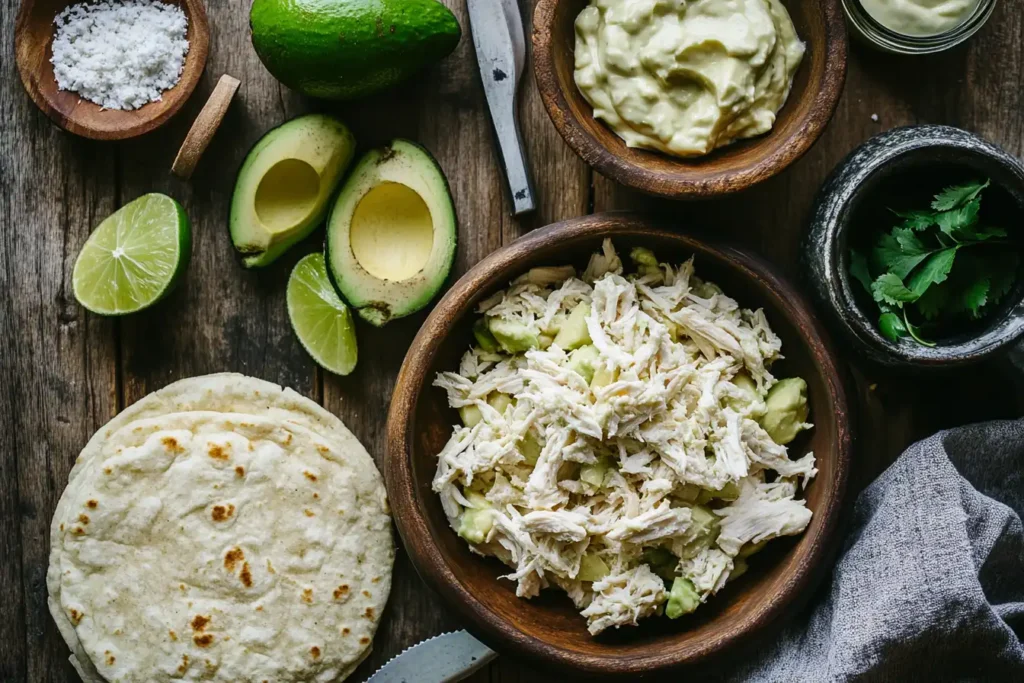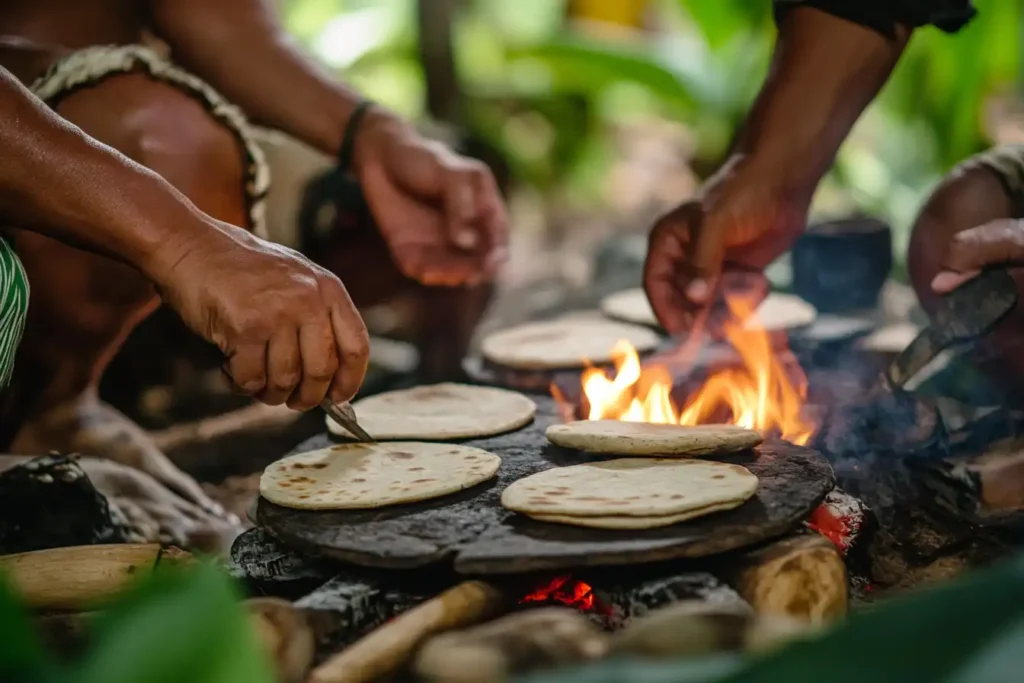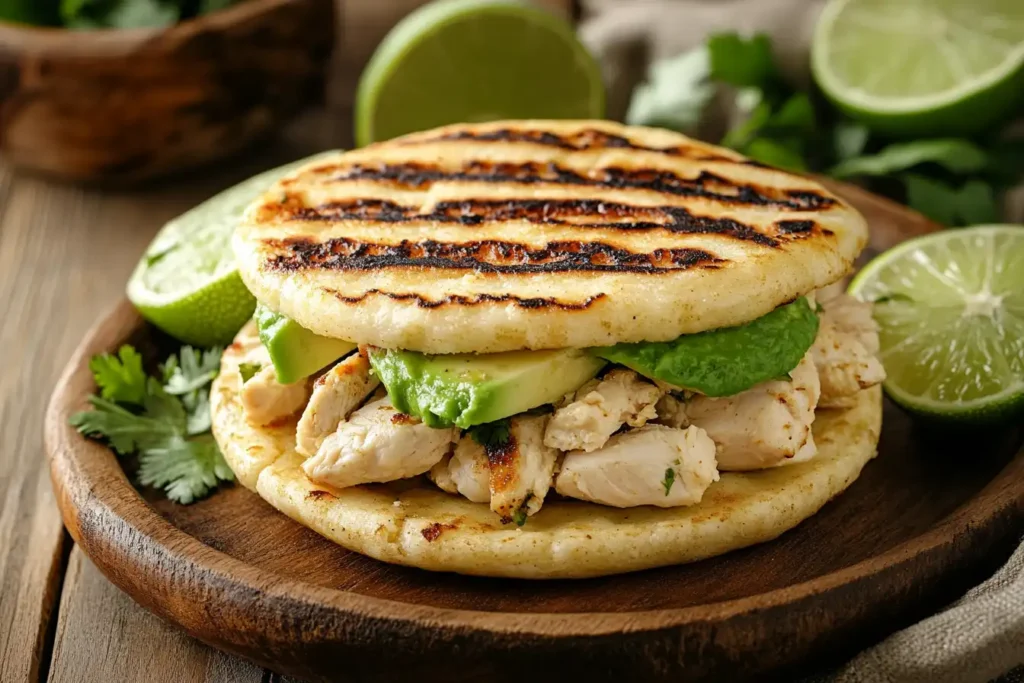The word “pepiada” carries layers of cultural and linguistic significance in Venezuelan heritage. More than just a term, it embodies a unique blend of history, beauty, and gastronomy. From its origins in everyday vernacular to its immortalization through the renowned Reina Pepiada arepa, this article dives deep into the essence of “pepiada.” Let’s explore its meaning, etymology, and role in Venezuelan culture and cuisine.
Introduction to ‘Pepiada’
The journey to understanding “What is the meaning of Pepiada” begins with its place in the Venezuelan lexicon. Often associated with charm, beauty, and allure, the term transcends a simple definition. Interestingly, its popularity surged alongside the rise of cultural symbols, such as Miss World titleholder Susana Duijm, whose success in 1955 inspired the creation of the beloved Reina Pepiada arepa.
So, what makes “What is the meaning of Pepiada” so special? Well, the answer lies in its multi-faceted use. From colloquial expressions to culinary creations, the word reflects Venezuelan identity and pride. Furthermore, it is both a compliment and a celebration—a term steeped in admiration and national unity.
As we embark on this exploration of what is the meaning of Pepiada, we’ll uncover the roots of the term, its culinary contributions, and its influence across art, music, and media. Therefore, stay tuned—this journey promises to be flavorful, fascinating, and deeply Venezuelan.
Etymology and Linguistic Roots of ‘Pepiada’
Origins of the Term ‘Pepiada’
The term “pepiada” finds its roots in mid-20th-century Venezuelan slang. Interestingly, colloquial expressions gave rise to the term, which historically described someone who was fashionable, charismatic, or attractive. Moreover, the word likely stems from “pepita,” meaning “seed” in Spanish, a metaphor for something small yet full of value or allure.
Cultural historians suggest that the popularization of the term coincided with Venezuela’s burgeoning beauty pageant culture in the 1950s. During this time, Venezuelans closely tied national pride to the image of the beautiful and poised Venezuelan woman, epitomized by Susana Duijm’s victory in the Miss World contest. Her triumph elevated “pepiada” to a term of endearment and admiration, extending its reach beyond individual attractiveness to encompass broader ideas of grace and national pride.
Evolution of Its Usage in Venezuelan Spanish
Over the decades, the meaning of “pepiada” has evolved, adapting to the dynamic shifts in Venezuelan language and culture. While its original use as a compliment for physical beauty persists, it has expanded to signify charm and magnetism in a broader sense.
Interestingly, “pepiada” has also transcended its descriptive origins, becoming symbolic of Venezuelan identity. For instance, the naming of the Reina Pepiada arepa illustrates how language, culture, and food intertwine to celebrate collective pride. Today, people casually use the word in everyday conversations to denote someone who is remarkable, special, or captivating—traits that resonate deeply in Venezuelan society.
Cultural Significance of ‘Pepiada’ in Venezuela
‘Pepiada’ in Venezuelan Popular Culture
In Venezuelan culture, “pepiada” goes beyond its literal meaning, finding a place in the nation’s artistic, culinary, and social fabric. Its most iconic representation is the Reina Pepiada arepa, a dish that not only delights taste buds but also commemorates a historic moment of Venezuelan pride. The dish’s creators, the Álvarez brothers, named it in honor of Susana Duijm, symbolizing a perfect blend of beauty, tradition, and flavor.
Beyond food, “pepiada” has influenced music and media. Its mention in songs, movies, and even advertising underscores its emotional resonance. The term has become shorthand for celebrating the charisma and beauty inherent in Venezuelan life. Whether through art, entertainment, or cuisine, “pepiada” remains a cherished cultural marker.
Association with Beauty and Femininity
From its inception, “pepiada” has been deeply tied to the ideals of beauty and femininity. Notably, the term’s association with Miss World winner Susana Duijm solidified its reputation as a descriptor for elegance and allure. Furthermore, this link between language and physical grace reflects societal values in mid-20th-century Venezuela, where women’s beauty represented a significant source of national pride.
Even today, “pepiada” continues to symbolize a confident, captivating personality—not merely physical beauty. Over time, its connotation has grown to encompass inner charm, wit, and intelligence, effectively redefining femininity for modern audiences. This evolution aptly reflects Venezuela’s shifting cultural norms, where beauty is celebrated as both multidimensional and empowering.
The ‘Reina Pepiada’ Arepa: A Culinary Delight
History of the ‘Reina Pepiada’ Arepa
The Reina Pepiada arepa is not just a Venezuelan culinary treasure; rather, it’s a celebration of a historic moment. Created in the 1950s by the Álvarez brothers in Caracas, this iconic dish was named in honor of Susana Duijm, the first Venezuelan to win the Miss World title. Significantly, her victory marked a turning point for national pride, and naming the arepa after her became a way to immortalize her remarkable achievement.
The name Reina Pepiada, which translates to “curvaceous queen,” reflects both Duijm’s beauty and the indulgent nature of the dish. The arepa’s debut brought immediate popularity, combining traditional Venezuelan flavors with a modern twist that represented the aspirations of a country stepping onto the global stage. Today, it remains a beloved symbol of Venezuelan culture and a testament to the nation’s creativity and pride.
Ingredients and Preparation

The Reina Pepiada arepa is truly a masterpiece of simple yet flavorful ingredients. Its filling combines shredded chicken with mashed avocado, mayonnaise, and a splash of lime juice, creating a creamy and savory delight. Additionally, some recipes enhance the mixture by adding green peas or cilantro, offering extra texture and bursts of fresh flavor.
The base of the dish is the classic arepa—a cornmeal patty that’s grilled, baked, or fried until golden. To prepare the Reina Pepiada, the arepa is split open and generously stuffed with the creamy chicken and avocado mixture. The balance of the warm, crispy arepa and the cool, rich filling is nothing short of perfection.
For best results, fresh, high-quality ingredients are essential. The avocado should be ripe and creamy, and the chicken tender and well-seasoned. The final dish is not just a meal but an experience, embodying the vibrant flavors of Venezuela.
Variations Across Regions
While the original Reina Pepiada recipe remains a favorite, regional adaptations have added unique twists to the dish. In coastal areas, seafood like shrimp may replace chicken, offering a fresh, maritime version of the classic. Some versions incorporate a hint of garlic or onion, enhancing the filling’s depth of flavor.
Health-conscious variations substitute mayonnaise with yogurt or avocado cream, reducing calories while maintaining richness. Meanwhile, gourmet interpretations use premium ingredients such as smoked chicken or artisanal arepas made with different types of cornmeal.
These variations highlight the versatility of the Reina Pepiada, proving that its essence can adapt to diverse tastes while retaining its iconic status. Each twist on the recipe carries the heart of Venezuela’s culinary heritage, making it beloved across regions and generations.
‘Reina Pepiada’ in Modern Venezuelan Cuisine
Contemporary Interpretations by Chefs
In recent years, Venezuelan chefs have creatively reimagined the Reina Pepiada to suit contemporary palates and align with global dining trends. For instance, from upscale restaurants to bustling street food markets, chefs have experimented with gourmet fillings such as truffle-infused avocado, smoked chicken, and exotic herbs. Moreover, these innovative interpretations not only elevate the humble arepa but also transform it into a sophisticated dish that appeals to modern culinary tastes while preserving its traditional charm.
Some chefs even deconstruct the Reina Pepiada, presenting its components as separate elements on a plate. Others fuse it with international cuisines, such as serving the filling in tacos or wraps. These innovations keep the Reina Pepiada relevant, showcasing its adaptability and timeless appeal.
Presence in International Venezuelan Restaurants
With the Venezuelan diaspora spreading across the globe, the Reina Pepiada has gained international fame. Venezuelan restaurants in cities like Miami, Madrid, and New York proudly feature this dish on their menus, introducing it to diverse audiences.
International diners often describe the Reina Pepiada as a perfect blend of comfort food and exotic flavor, making it an instant favorite. Its global presence has also helped raise awareness of Venezuelan cuisine, creating a bridge between cultures through food. Whether enjoyed in its traditional form or as part of a fusion creation, the Reina Pepiada continues to capture hearts worldwide.
‘Reina Pepiada’ in Music and Media
Analysis of Álvaro Díaz’s Song ‘Reina Pepiada’
Puerto Rican artist Álvaro Díaz paid homage to the iconic Reina Pepiada in his song of the same name, blending Venezuelan culture with urban music. While the title nods to the famed arepa, the song uses the term metaphorically to celebrate a love interest. The lyrics convey admiration and longing, drawing a parallel between the irresistible nature of the dish and the object of his affection.
Díaz’s clever use of Reina Pepiada as a symbol showcases its broader cultural resonance. It’s not just food—it’s a representation of allure, warmth, and charm. By integrating it into his music, Díaz introduced a wider audience to this Venezuelan symbol, further cementing its place in Latin American pop culture and deepening our understanding of what is the meaning of Pepiada.
Representation in Venezuelan Media
In Venezuela, Reina Pepiada frequently appears in media as a beloved cultural symbol. From cooking shows to advertisements, its presence underscores national pride and identity. Documentaries about Venezuelan cuisine often highlight the dish as an example of culinary ingenuity and a unifying force in the country’s food traditions.
The term also pops up in literature and television as a descriptor for beauty and confidence. In these contexts, Reina Pepiada serves as a shorthand for all things quintessentially Venezuelan: vibrant, flavorful, and full of character. Its representation in media has helped the dish transcend its origins, becoming a symbol of home and cultural pride for Venezuelans everywhere.
The Role of Arepas in Venezuelan Culture

Historical Origins of Arepas
Arepas, the foundational base of the Reina Pepiada, have ancient roots tracing back to indigenous peoples in Venezuela and Colombia. Made from ground corn dough, these round, versatile patties have been a staple for centuries. Historically, arepas were cooked on flat stones over an open flame, a technique that reflects the ingenuity of early indigenous culinary traditions.
For Venezuelans, the arepa is more than just food—it’s a symbol of cultural identity and a daily ritual. Every household has its unique recipe, and the arepa’s versatility makes it a canvas for endless fillings, from savory meats to sweet jams.
Arepas as a Unifying Symbol
In modern Venezuela, arepas symbolize unity amidst diversity. Regardless of region or class, this humble dish is a shared love across the nation. It represents resilience and adaptability, qualities that resonate deeply with Venezuelans. The Reina Pepiada is a standout example, blending traditional arepa-making techniques with contemporary flavors that capture the nation’s spirit.
How ‘Reina Pepiada’ Reflects Venezuelan Identity
A Celebration of Beauty and Success
The naming of the Reina Pepiada was more than a culinary choice; it was a celebration of Venezuela’s growing presence on the global stage. Susana Duijm’s win as Miss World 1955 symbolized the nation’s beauty, talent, and potential. By associating this dish with her success, the Reina Pepiada became a tribute to collective pride.
Culinary Ingenuity and Local Flavors
The ingredients of the Reina Pepiada reflect Venezuela’s culinary creativity. Avocados, a native fruit of the region, blend seamlessly with imported ingredients like mayonnaise to create a dish that is distinctly Venezuelan yet influenced by global trends. This fusion mirrors the nation’s openness to cultural exchange while remaining rooted in tradition.
Comparing ‘Reina Pepiada’ to Other Iconic Dishes
Arepa vs. Tacos and Burgers
In international cuisine, the arepa stands out for its simplicity and versatility. Unlike tacos, which rely on wheat or corn tortillas, or burgers, which are typically made with leavened bread, arepas are naturally gluten-free and made from pure cornmeal. The Reina Pepiada specifically rivals tacos and burgers in its ability to be both hearty and refreshing, thanks to its creamy avocado and chicken filling.
The Universal Appeal of the ‘Reina Pepiada’
Dishes like the Reina Pepiada resonate with global audiences because they balance comfort and sophistication. Much like Italy’s pizza or Japan’s sushi, the Reina Pepiada is a dish that adapts to various tastes while preserving its cultural essence.
How to Make ‘Reina Pepiada’ at Home
Step-by-Step Guide to Perfect Arepas
- Prepare the Dough: Mix cornmeal, water, and a pinch of salt until a smooth, pliable dough forms.
- Shape the Arepas: Divide the dough into equal portions and shape them into flat discs.
- Cook the Arepas: Grill or pan-fry the discs until golden and slightly crispy on the outside.
Creating the Signature Filling
- Cook and Shred the Chicken: Boil chicken breasts with seasoning, then shred finely.
- Mix the Filling: Combine chicken with mashed avocado, mayonnaise, lime juice, and optional herbs like cilantro.
- Assemble the Arepas: Slice the arepas open and stuff generously with the creamy filling.
FAQs about ‘Pepiada’ and ‘Reina Pepiada’
What does ‘pepiada’ mean in Spanish to English?
In Spanish, “pepiada” roughly translates to “curvy” or “voluptuous” in English, often used to describe someone attractive or charming. The term is deeply tied to Venezuelan culture, where it conveys admiration and allure.
What does ‘Reina Pepiada’ mean in slang?
In Venezuelan slang, Reina Pepiada translates to “curvy queen,” referring to both physical beauty and regal charm. The term was coined to honor Susana Duijm, Miss World 1955, blending elegance with cultural pride.
What is ‘Reina Pepiada’ made of?
The Reina Pepiada arepa is filled with shredded chicken, mashed avocado, mayonnaise, lime juice, and sometimes green peas or cilantro. This creamy and savory mixture is stuffed into a freshly made arepa, creating a dish that’s both delicious and iconic.
What is the English name for arepas?
In English, arepas are often referred to simply as “cornmeal patties” or “corn cakes.” These versatile and gluten-free breads are a staple in Venezuelan and Colombian cuisine.
Conclusion
Recap of ‘Pepiada’s’ Meaning and Cultural Impact
The question “What is the meaning of Pepiada” embodies much more than its literal translation—it represents beauty, charm, and Venezuelan identity. From its roots in colloquial expressions to its immortalization in the beloved Reina Pepiada arepa, this word captures the essence of a culture rich in tradition and pride.
Through its appearances in food, music, and media, Reina Pepiada serves as a bridge between Venezuelan heritage and global recognition. Whether tasted in its original form or interpreted through contemporary culinary innovations, this iconic dish—and the question “What is the meaning of Pepiada” it represents—continues to inspire admiration and connection worldwide.


1 thought on “What is the Meaning of Pepiada? Unveiling Its Cultural and Culinary Significance”